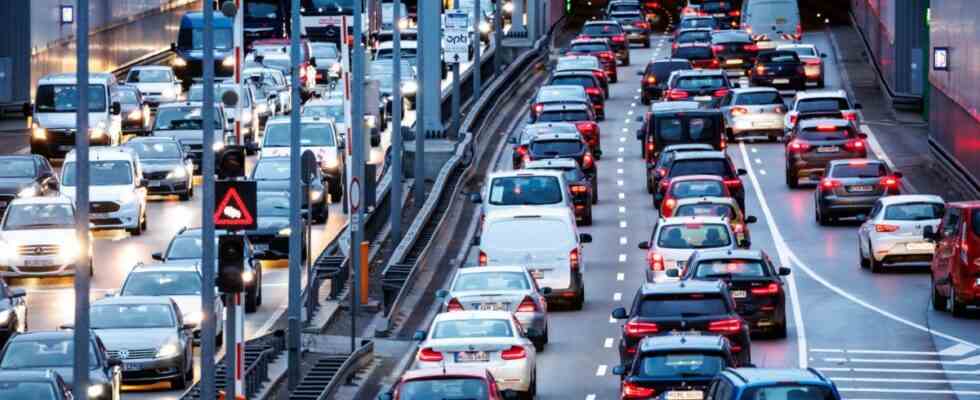Munich has done it again: According to the latest surveys by the traffic data provider Inrix, the state capital has once again taken first place among the cities with the most congestion in Germany and can therefore once again call itself the “congestion capital”.
For its statistics, Inrix has analyzed anonymized data from various sources such as datasets from telephones, vehicles and cities. According to the company, the data shows the volume of traffic on the road sections examined over the entire course of the day.
Even if the mobility department does not think much of such rankings because the low-traffic night times are not suitable as a benchmark for measuring the level of congestion, the surveys are an indication every year that vehicles at certain times can better be described as standing vehicles.
In 2022, Munich is again right at the top with 74 hours of traffic jams per year (79 in the previous year), followed by Berlin with 71 hours of traffic jams (65), Hamburg with 56 hours (47). Potsdam comes fourth again with 55 hours (46), followed by Darmstadt with 47 (37) and Leipzig with 46 hours (40) traffic jams. The German average is 40 hours, before Corona it was 46.
The good news for Munich drivers is that the average time spent in traffic jams has dropped by five hours. In addition to Nuremberg, the new and old congestion capital is the only city in the top 10 ranking that can show a decrease in traffic compared to the time before the corona pandemic. In all other cities in the top ten, the time lost for commuters due to traffic jams and slowdowns increased.
The Mittlerer Ring in Munich is again at the top of the most congested routes in the country, this time with the section between Stettnerstrasse and Plinganserstrasse. Anyone who regularly drove this 4.6-kilometer route at peak times in 2022 would lose 13 minutes of time every day, adding up to 51 hours a year.
Munich is ranked 21st in Europe
In a Europe-wide comparison, Munich only ranks 21st. The undisputed leader, even worldwide, is London with 156 hours of traffic jams, Paris comes in second with 138 hours in the European ranking. Palermo (121 hours), Dublin (114) and Rome (107) follow.
According to Inrix calculations, the costs for drivers caused by the loss of time in traffic jams have risen on average across Germany by 28 euros to 399 euros (2021: 371 euros) per year. However, this seems to deter only a few people from driving: traffic volume, measured in vehicle kilometers on weekdays, rose by 21 percent compared to 2021. It is even eight percent higher than in 2019, the year before the corona pandemic.
The use of buses and trains, on the other hand, has still not reached the previous level, according to the Inrix study. The number of passengers in the first half of 2022 was still a fifth below that of the first half of 2019. This also corresponds to the information provided by the Munich Transport Company (MVG). But things are slowly getting better again: MVG now speaks of a capacity utilization of 80 to 90 percent, depending on the line and time of day, compared to the time before Corona.

